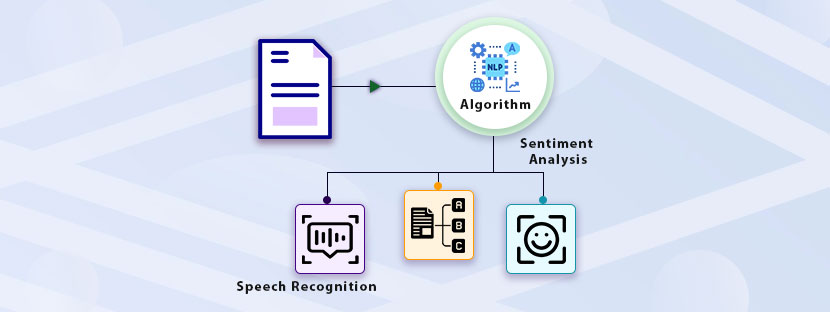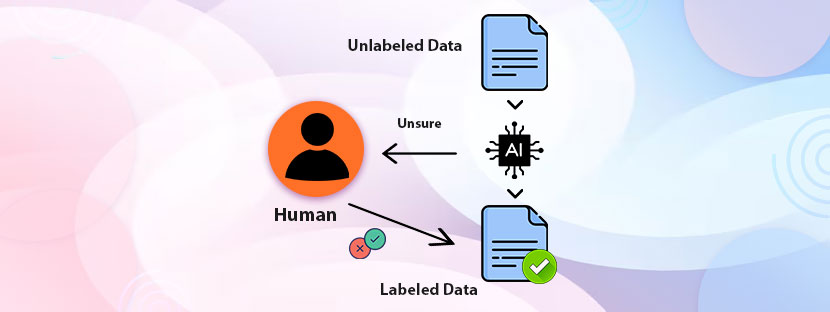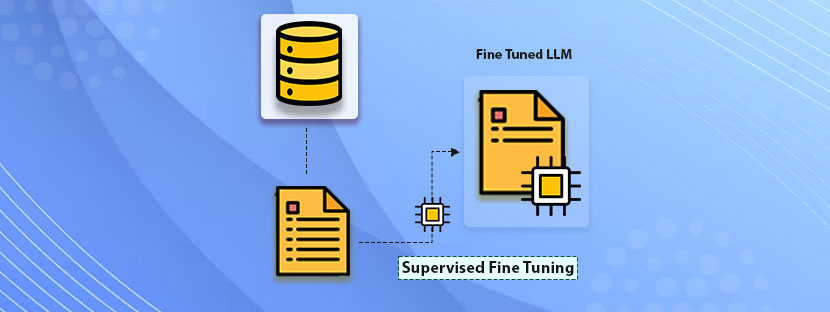Teaching machines to understand human language is a tough deal. That’s why the key here to streamline the process is automation. With the incorporation of different algorithms for natural language processing (NLP), you can make machines understand human languages.
Let’s have a discussion of these NLP algorithms in this blog using their real-life application in this blog. We’ll also cover the basic concepts and types of algorithms implemented in NLP here.
Get ready now?
NLP Algorithm Explained
Human language plays a critical role in every sphere of business. Be it a customer care executive taking up a customer query or a CEO addressing a team meeting, language is the medium to express. However, mostly we produce unstructured data, which needs a structured format if we want to use it in business. Unfortunately, only 18% of companies are able to use unstructured data in their processes.
Companies that rely on Artificial Intelligence (AI) use algorithms for natural language processing. It’s like automating the task to teach a computer about the language learning process. These algorithm helps structure the data with automation.
Types of Algorithms for Natural Language Processing

Algorithms for Natural Language Processing at Work
✧ Speech Recognition
Conversion of spoken words into written texts is the core area of speech recognition. The applications of speech recognition are quite wide when it comes to recent developments. With the help of this technology, companies can transcribe calls, dictate medical notes, document interviews, and much more.
Human speech is difficult to record using any system, especially computers. The complexity of the process is excessively intense, and it involves several steps. Thus, the symbolic or statistical, or hybrid algorithm can support your speech recognition software here. To understand the deep layers of spoken language, these algorithms help detect speech patterns.
✧ Text Classification
Have you used any software that helps you segregate emails into different categories?
If yes, then you are familiar with the text classification algorithms. Using this technology, you can predefine various categories in emails as well as in web pages. Classifying texts using different sorts of word categories is possible. Among them, classifying a word as positive or negative is the most appropriate one. It helps the system to predict the category of documents to which they belong.
Every document is a composition of words, and each word has different frequencies and positions in the document. So, the text annotation algorithms for natural language processing find the most appropriate category by measuring the distance. That’s the reason the software enabled with text classifications can detect the sentiment of the words and then based on that categorises the documents.
✧ Named Entity Recognition
Like the “Find” option in PDFs, named entity recognition helps you find names from databases. This category of NLP helps to extract entities like people, places, objects, organizations, and others from text documents. For example, you can extract all your preferred company names and their respective email addresses from a vast list of company information databases.
Therefore, named entity recognition helps in information retrieval, searching databases, and other vital tasks. With the application of the right NLP types, accurate extraction of information is highly possible. If you want to build this system using supervised ML models, logistic regression is the right method. Neural or clustering algorithms for natural language processing are better if you are using unsupervised ML models.
✧ Sentiment Analysis
Analyzing the opinions expressed in texts is the key process of sentiment analysis. It’s a critical process of monitoring text data. It determines whether a text (comment, article, post, etc) is negative, positive, or neutral. Primarily, it assesses the tone of the text using NLP metrics.
The best part of sentiment analysis is that it can help you assess any unstructured text or any data selected from anywhere. In the real context, social media applications use sentiment analysis to detect hate comments and take action against the commentators.
✧ Machine Translation
Using special algorithms for natural language processing, automated machine translation can be done. It helps quickly translate a large volume of text from one language to another. The format of the text can be anything, but the machine translation model can translate from anywhere, be it a book, or website, a blog, or anything.
Using NLP algorithms helps machines understand the meaning of a document and then translate it. Therefore, the accuracy of the translation in this case always remains quite high. This process becomes useful when you have an internal team to work with, but your client shared a document in a language other than English. Hence, you can translate all documents into English using this process.
✧ Automatic Summarization
Creating a short and actionable summary out of a lengthy document is all that algorithms for natural language processing can do. This process can help summarize any sort of unstructured data using content relevancy.
Feeding the model with accurate NLP annotation is important here. Contextual understanding of the text can bring precision to the data summarization. Utilizing the right method to feed your machine with accurate contextual learning can help you here. This will increase the level of accuracy in the summarized output.










